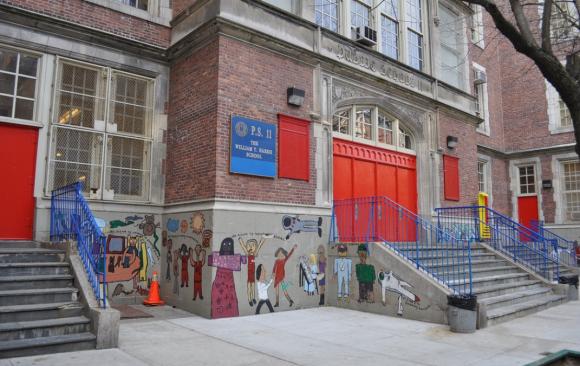


New York City Mayor Bill de Blasio said Monday he is working toward reopening city schools, which he said would involve "constant" coronavirus testing.
He commented today at his daily news briefing, and said the city has to take its "core vision" of health and safety first and "intensify it."
Under his tier strategy, students with disabilities—who attend the city's District 75 schools—would head back to school first.
Then, early childhood education programs under 3-K and Pre-K programs, followed by elementary school students
Middle and high-school students would seemingly come after that, de Blasio indicated.
"We'll keep building from there," the mayor told reporters on Monday.
His plan lacked details. The mayor, closed schools last week when the city’s seven-day average coronavirus positivity rate metrics reached 3%. He said parents will need to give consent for their children to be tested in schools, constantly, will be key to the process. "I know how much parents want their children back in school," de Blasio said. "I know how much educators and staff want to be there to serve kids. It will take a lot more testing, a very aggressive approach, a proactive approach. But we can do it."
Schools Chancellor Richard Carranza has said the goal is to reopen schools by next month.
The mayor said schools would reopen in waves and District 75 schools, or special education, would have first priority because of those students’ dire need for in-person learning and the next group to return to schools would be early education students — 3-K and pre-K — and then elementary school students.
The push to reopen schools comes as de Blasio said the state is expected to move to designate the city as an "orange zone," which would mandate the closure of indoor dining and businesses such as gyms.
The mayor has said the city is on track to meet the state's metric of a seven-day 3% positivity rate for 10 consecutive days in the coming days. The state derives its positivity rate from test results that come back on a specific day, while the city's metric is based on tests taken on a particular day. "Once that happens, we will be in a position to take additional measures to reopen schools," de Blasio said.
Under that scenario, schools can reopen as early as the fifth calendar day after the orange zone designation if everyone in attendance at the school, including teachers and staff, first receives a negative coronavirus test, according to state guidelines.
The rules also mandate that 25% of the in-person learning community, including teachers and staff, must be tested weekly. The state will also provide schools with rapid test kits if requested.
Mayor de Blasio says he's hopeful the closure will last just a few weeks. He expects to provide further clarity on reopening benchmarks before Thanksgiving after consultation with the state. In the meantime, city officials say they understand the sudden -- and all-too-familiar -- inconvenience parents are facing yet again.
While the mayor sounded confident that schools would be closed for a matter of weeks, Gov. Andrew Cuomo did not seem as optimistic, warning "from here to January is very dangerous. A vaccine is on the way, but not in time to make a difference."
Many frustrated parents question why bars and restaurants are allowed to stay open when they're at higher risk of spreading COVID-19 and the city's own data has shown an in-school positivity rate under 0.2 percent — a number Cuomo says indicates schools are safer than New York City streets.
To parents upset that restaurants and bars stay open as schools close, de Blasio had a stark message Thursday: It's just a matter of time before those shut, too.
Micro-Clusters fall into the "orange zone" under Governor Andrew Cuomo's approach. Parts of upper Manhattan and Staten Island are already facing new restrictions after Cuomo designated new orange and yellow zones for those areas of NYC on Monday.
The Micro-Cluster Strategy identifies clusters and the areas around them and categorizes them into one or more color-coded zones with corresponding levels of restrictions based on severity: Red Zones, Orange Zones, and Yellow Zones. New rules and restrictions directly target areas with the highest transmission of COVID-19 cases & surrounding communities.
Governor Cuomo reminds New Yorkers that as Thanksgiving and the holidays approach, we must wash our hands, wear our masks and avoid gatherings to keep the infection rate down.